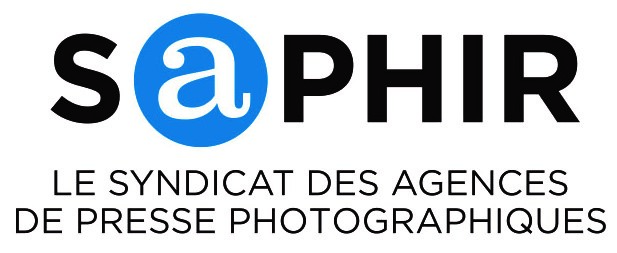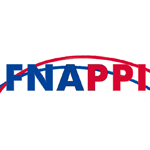On the technical feasability of EU reform efforts – without censorship and upload filters.
Just before the vote on the new proposal for the EU Copyright Directive, Copytrack addressed MEP’s with the following letter.
The European Union’s idea of protecting copyright in the age of digitisation and globalisation is correct and important. It’s just the “how?” that divides the minds so far.
The struggle over the THE EUROPEAN PARLIAMENT DIRECTIVE AND THE COUNCIL on Copyright in the Digital Single Market clearly shows this. The main point of contention is the planned provisions of Article 13, which foresees that online content sharing service providers must take appropriate and proportionate measures to ensure that works that infringe copyright are not available on their services. For example, this could be achieved through content recognition techniques. Critics claim that there is a lack of technical alternatives to achieve the standard required protection of authors. According to them, this would result in extensive upload filters, and in the worst case, censoring upload filters. However, this is not correct. There are already technical solutions in place today that both protect authors and relieve the burden on online content distribution services and enable the implementation of the DIRECTIVE OF THE EUROPEAN PARLIAMENT AND OF THE COUNCIL on Copyright in the Digital Single Market without restricting the freedom of expression and information of EU citizens.
COPYTRACK has been dedicated to the automated detection of copyright infringements on the Internet since 2016. Our software makes it possible to search the Internet worldwide for images, compare them with images stored in our database, and to detect illegal uses. It is then only up to the rights holder to identify the respective uses as copyright infringements.
Now finding them is just a first step in combating copyright infringement. It would be better to proactively prevent copyright infringements by ensuring that works can only be made publicly accessible on the Internet by authorised persons. A significant problem with the automated processing of digital requests, however, is the lack of transparency. Which leaves us with the question, who is authorised at all? In order to answer this question, it would require a central inquiry possibility for copyright-protected works and their rights holders.
To solve this problem, CONCENSUM was founded at the beginning of 2018. CONCENSUM is a global copyright register that allows authors and rights holders to register their rights related to a specific image. CONCENSUM is based on blockchain technology, which prevents data theft and misuse and is completely transparent. In this way, the legal circumstances of an image can be determined easily and, if necessary, automatically determined by both the rights holder and any third party via a digital interface. This provides simple, fast and uncomplicated clarity about the rights holder.
Both the image search and the image comparison, as well as, the register already exist today and are immediately ready for use.
With your help, the concerns raised by the introduction of Art. 13 DIRECTIVE OF THE EUROPEAN PARLIAMENT AND OF THE COUNCIL on Copyright in the Digital Single Market, in particular, can be dispelled.
- No censorship of the Internet
A major criticism of the DIRECTIVE OF THE EUROPEAN PARLIAMENT AND OF THE COUNCIL on Copyright in the Digital Single Market is Art. 13 and the associated fear that online content distribution services will use automated upload filters, which would lead to more being filtered out than allowed to upload. This would ultimately lead to self-imposed censorship, which would be against the interests of the general public, in particular freedom of expression and information and entrepreneurial freedom. But this is not necessarily the case. The technical possibilities created by COPYTRACK and CONCENSUM offer a more effective method to protect copyright:
The solution could be as follows: Works protected by copyright are initially registered with CONCENSUM. This gives the rights holder a unique digital fingerprint that provides information about their authorship or right of use. Both the author and the rights holder, e.g. the licensee, can define their authorisation.
If an image is uploaded to an online content sharing service, it can be easily identified with COPYTRACK’s Matching Engine and subsequently compared with the data registered with CONCENSUM. The online content sharing service provider immediately knows who is authorised to use the image and can match this against the person uploading the image. Against all fears, there is no indiscriminate and arbitrary sorting, but a selective individual examination of authorship.
- No unmanageable costs for online content sharing service providers
Critics also point out that the measures required either result in substantial license payments or in the introduction of upload filters, whose technology is very expensive or requires a complicated and long implementation period. But we can also eliminate this fear.
COPYTRACK and CONCENSUM already successfully offer the International Register, as well as, the Matching Engine in the digital images application field, further areas of application are easy to implement. Registration and matching for digital texts are also conceivable. Here no online content sharing service provider has to reinvent the wheel, but can rely on already existing technical solutions.
- Facilitation of liability for online content sharing service providers
With the introduction of Article 13, the liability privilege of telemedia providers is to be abolished. Making online content sharing service providers liable for “all” content would be disproportionate. But here, too, countermeasures can be taken. According to the Council’s draft, online content sharing service providers are exempt from liability if they prove that they have made their “best efforts” to make copyrighted material inaccessible. However, the integration of services such as COPYTRACK and CONCENSUM shows the will to prevent copyright infringements. It is up to the legislators and courts in the Member States to define the concept of “best efforts”. There is therefore nothing to prevent such online content distribution services using the abovementioned services from being exculpated in terms of liability.
- Affordable even for small suppliers
There is criticism that the required measures will be very expensive and drive smaller providers into bankruptcy. But this risk does not exist either, since the services previously described have already been developed and can be purchased as software as a service or subscription model for online content sharing service providers for a manageable fee.
Upshot
Finally, it should be noted that the measures required in Art. 13 do not necessarily lead to the introduction of upload filters, censorship or even to the abolition of the Internet as we know it. There are already technical measures in place today that allow copyright works to be examined and used quickly, automatically and cost-effectively, while protecting the interests of authors, online content sharing service providers, and Internet users.

















